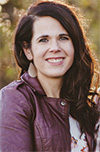I remember the call like it was yesterday. I was on a business trip to Pennsylvania and took a quick jingle from my husband as I waited for my lunch to arrive. “I’ve got some bad news,” he started. “Roofus is down; she was in heat, got rode wrong, and we think she’s split.”
It might as well have been the kiss of death for old Roofus. A newlywed farm wife who had only recently gotten the chance to get acquainted with her new husband’s herd of 200-plus cows, I was far from having everybody memorized.
Everybody, that is, but my dear friend Roofus. Before my arrival on the scene, Roofus was simply No. 749. But after kindling a friendship with each other in holding pen and parlor, No. 749 became the first animal deemed worthy of receiving a nickname. In hindsight, Roofus was special only in her disposition. She took multiple services to breed, wasn’t setting any records on test day and was, more or less, an average looker.
Yet she was still special to us and, as many a farmer would agree, if something is going to happen to something – “It’s always the special ones.”
Fast-forward six years. The operation is now moving along nicely, and we’ve got a little disposable income to start building up our genetic repertoire. We invest in a handful of embryos, buy a cow, a heifer and a bottle of follicle-stimulating hormone. Na-Mor-Dale Genetics is officially underway.
As a sire analyst, I frequently come face to face with the trials and tribulations one endures while in the pursuit of genetic advancement. Zero fertiles, zero pregnancies, aborted donors, injured donors, dead donors, no heifer calves, no calves at all. Take your pick from the long list of pitfalls.
I’ve even heard of oocytes being accidentally fertilized by bucking stock semen (the horror). Never lacking empathy, I’m always sure to sympathize with my clients while assuring them their luck will turn around and help to come up with solutions to move on. And yes, it really does seem like “It’s always the special ones” where Murphy’s Law seems to strike most frequently.
With our first year of genetic projects well under our belts, I can say our operation is not excluded from this rule. While the first group of purchased embryos did fine on fertility, the subsequent calves were no great success. Four out of four bull calves – yes, even the one that was ultrasounded a heifer. Add to that a calf being born with a broken leg.
After having some success with IVF, we thought maybe our luck had turned around. Wrong. Our purchased cow freshened with a bull that was supposed to be a heifer. Not getting hung up on that, we focused on the five ET pregnancies coming from her for the spring. Four ultrasound heifers and one ultrasound bull. I cannot tell you how excited we were to finally have an ET heifer born on this farm.
Unfortunately, fate was not yet done with us. The first heifer was pulled backward and dead by my husband. We accepted that as unpreventable. The second heifer was born alive and healthy, and we all collectively breathed a sigh of relief. Did you know that a 7-hour-old calf can still bleed to death from its navel if it bumps it just right? (It’s always the special ones.) We were now zero for two.
On April 24, beautiful, perfect little Guinevere was born. Two days later, Guinevere mysteriously injured her foot, rather severely; we are still perplexed as to how. While we were battling her lameness, Guinevere’s genomic evaluations came back and indicated that she is in the top 95 percent for her age group.
I mentally prepared myself to go out to her hut someday and find her lying there dead. The last of the ET calves were born and, amazingly, the one that was supposed to be a bull turned out to be a heifer. Our luck had turned. Two days later, we diagnosed her with a severe heart murmur.
While our genetic ventures have certainly had their share of crazy “Why is everything weird and bad happening to my ET calves?” moments, the key to all this is to focus on the good. The cow we purchased has been everything we ever hoped for. Good flusher, classified, pictured, decent records, healthy and trouble-free; she really checks every box. In the end, we won’t let our setbacks keep us from persevering and chasing our dreams.
I am also happy to say that little Guinevere is completely healed from her mystery injury and happily flouncing around in the weaned calf pen … being special. PD
Morgan Kliebenstein is a dairy producer with Genex Sire Analyst from Darlington, Wisconsin






